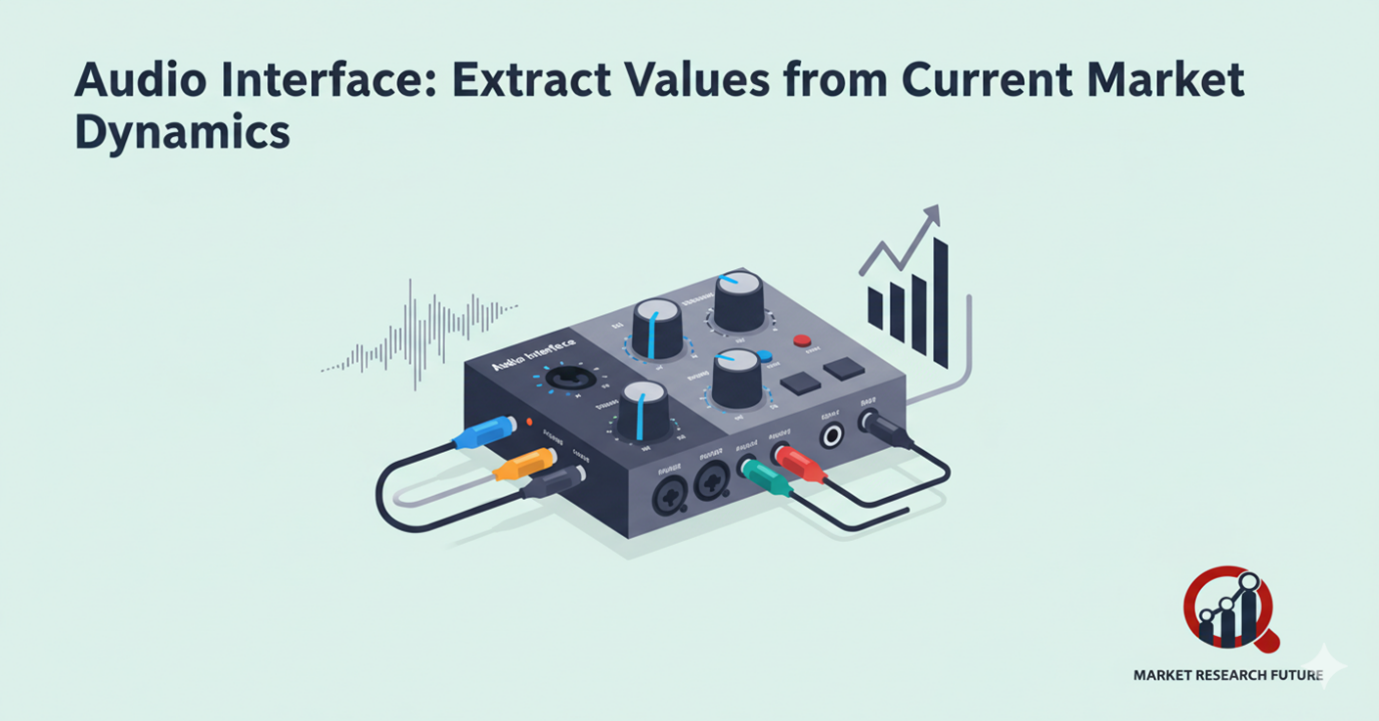Audio Interface: Extract Values from Current Market Dynamics

Trends in the Audio Interface Market
The audio interface is the most important part of any recording setup since it connects instruments, microphones, and the computer. It's not simply a connector; it lets hardware and software talk to each other without any problems, especially digital audio workstations (DAWs). Many current home studios use USB or FireWire interfaces that can both send and receive data. However, more advanced installations may use multiple devices connected by ADAT optical outputs to give them more options.
Most audio interfaces come with a digital mixer that has faders, knobs, and buttons for controlling more than one input channel. Some models even include patch bays to make routing easier. In addition to the essentials, manufacturers often offer other ways for their gadgets to link to other devices. For instance, popular series like Focusrite Scarlett and Tascam US have XLR inputs for professional microphones, balanced TRS connectors for line-level equipment, and RCA jacks for consumer-grade gear.
The ideal audio interface for a studio typically relies on how it is set up. For example, engineers who use analog mixing consoles might need interfaces that work with the way their hardware routes signals. The AD/DA (analog-to-digital/digital-to-analog) conversion technique is just as significant because it has a direct effect on sound quality. The accuracy and clarity of recordings depend on important characteristics, including sampling rate, bit depth, and channel count.
Not every device that records sound is an audio interface; therefore, it's important to remember that. DAWs can get signals from microphones, drum machines, and other input devices, but they can't convert or route them like a real interface can. But for the sake of ease, a lot of fans use the words "audio interface" and "sound card" interchangeably.
Budget-friendly interfaces are still a popular choice for entry-level systems. They use the computer's built-in sound card to add important functionality, including line-level connections, stereo inputs, and numerous outputs. Portable recorders and other similar devices can also do this in smaller consumer-grade settings. For example, the Zoom H1 is an easy way to record clear audio without the hassle of bigger equipment.
Many studios still use analog consoles as the main tool for making professional music. These consoles send out signals that aren't digital; therefore, they need to be changed before they can be recorded. This means that a high-quality audio interface is necessary since it turns analog output into digital files that may be edited, mixed, and mastered. The creative process between live sound and digital capture would not be complete without it.
The several built-in processors in interfaces are also changing the market. Some instruments come with built-in preamps, compressors, or effect units, which provide engineers additional control over the recording process. These kinds of capabilities cut down on the need for extra gear, making work easier for both home and professional studios.
Most interfaces that work with analog audio streams use conventional sampling rates like 32 kHz or 48 kHz. Built-in analog-to-digital converters (ADCs) work in real time, which means that recording sessions go smoothly without any breaks. Some versions have more than one converter to handle different types of input, while others use just one ADC to make things easier for smaller projects.
In the end, audio interfaces are still very important for anyone who makes music, podcasts, or other types of multimedia. Their changing qualities, which include flexible connectivity and real-time processing, make them the most important part of modern recording setups.

Leave a Comment